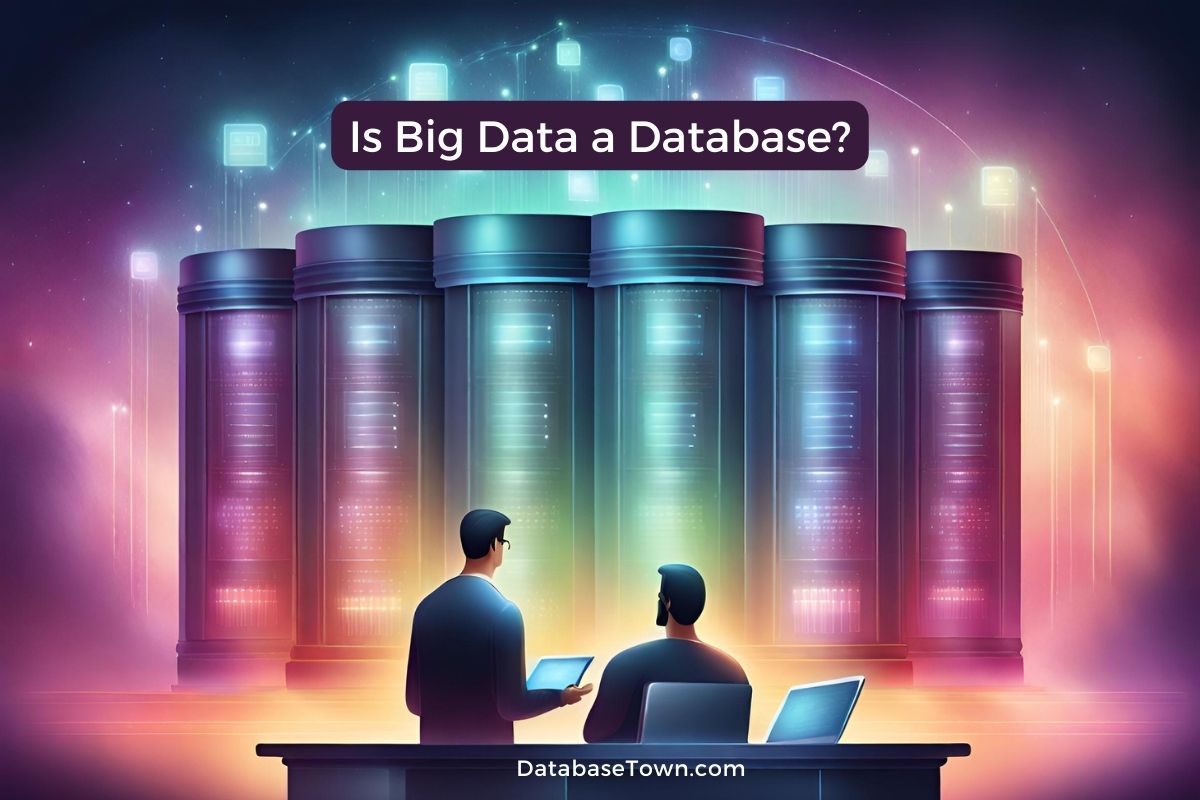
As big data continues accelerating as one of the most transformational business and technology trends – spurring investments, strategic initiatives, and career shifts into hot areas like data science and data engineering – a probing question arises.
Is big data synonymous with database technology or does it represent an entirely new paradigm beyond today’s database architectures and capabilities?
Here we’ll examine whether big data constitutes the next stage in database technology evolution or requires a revolution involving completely reinventing data storage, processing and analytics approaches from the ground up to tackle outsized opportunities accompanied by oversized data complexity.
Traditional Database Models and Big Data Challenges
Since frontend applications require backend databases reliably storing and accessing processed data that serves business operations, users logically question whether exponentially expanding big data workloads can fit existing database systems like Oracle, MySQL or SQL Server.
To answer this definitively requires examining how traditional relational databases (RDBMS) and NoSQL databases emerged to meet earlier data needs and contrasting their core principles and capabilities against big data’s distinguishing dynamics categorized across 3 Vs – volume, velocity and variety:
Volume – Big data environments scale massively from terabytes to petabytes to exabytes quickly, overwhelming most database capacity limits. Social data, mobile data, sensors and more drive relentless data growth.
Velocity – Streaming data continuously flows from user interactions, transactions, devices, logs and other sources demanding real-time analytics rather than sporadic processing in typical databases.
Variety – All types of structured, semi-structured and completely unstructured data from websites, video, social conversations must integrate for holistic analysis whereas databases conventionally handle only structured data.
NoSQL databases relaxed some constraints to handle loosely structured data and scale simpler data types, even they hit limits on extreme scale crunching endless, multi-structured data.
Hadoop-Based Big Data Architectures
As the amount of data from the web, sensors, and business systems grew too large for traditional databases to manage cost-effectively, new distributed computing systems were developed to process and analyze the massive data using clusters of inexpensive servers, enabling businesses to extract more value affordably.
Hadoop arose open sourcing Google research papers on MapReduce and distributed file systems (HDFS) allowing scale-out architecture for petabyte datasets. Apache Spark later augmented big data analytics capabilities.
This new standard is dependent on core changes.
- Extreme horizontally scalable architecture
- Commodity infrastructure affordability
- Compute processing flows to data
- Schema-less data on flexible data formats
- Analytics-focused from inception
- Cost-effectiveness over premium performance
- Open source communal innovation
Beyond technology transformations, this migration to enterprise-wide data lakes signaled tectonic shifts for people and processes – from traditional data administration teams to a new DevOps-style data engineer role emerged fusing software engineering and quantitative skills for gaining business insights.
Data science teams now collaborate closely with business leaders and technologists in an agile, iterative manner versus business units throwing requests over the wall to IT in earlier data warehouse models.
Key Differences: Big Data Tech vs Traditional Databases
Here are 5 major technical differences between big data tech and traditional databases:
| Legacy Databases | Big Data Architectures |
|---|---|
| Schema on Write – Fixed predefined data structures | Schema on Read – Structure imposed during processing |
| SQL DOM language | Varied languages – Java, Python, Scala, SQL, R |
| Disk-based, data indexed for low latency queries | Distributed data across disk and memory for cost-effective scale |
| Integrity and consistency centralized via DBA | Decentralized architecture with eventual consistency |
| Premium hardware and infrastructure | Economies of scale via commodity infrastructure |
Some pundits argue big data still relies on underlying database components for persistence like HBase or Cassandra hence does not fully escape the database sphere. However, these NoSQL data stores themselves reflect adaptations relativized against historical RDBMS principles.
Reconciling Big Data With Databases
Rather than directly replacing transactional systems of record powering mission critical business processes, big data ecosystems complement existing databases:
- Databases continue reliably powering backend business applications with ACID integrity handling high volumes of business transactions, queries and updates.
- Big data environments help analyze massive datasets exceeding what firms can store or process in production databases cost-effectively to uncover macro trends, correlations between disparate data and predictive signals essential for innovation and optimized decision making based on data-driven insights.
So database and complementary big data analytics platforms evolve symbiotically – the former incrementally advancing enterprise systems reliability and performance while the latter fuels more material business model advances, disruptive possibilities and competitive differentiation.
For this synergistic path forward, governance and organizational realignments help unify control and compliance across diverse systems while productively unleashing more exploratory analytics capabilities safely. Architectural convergence and tools like data virtualization, master data management (MDM) and data cataloguing also reduce silos operationally.
In some forward-looking applications like IoT streaming analytics, capabilities integrate natively within reduced footprint big data architectures aligned with cloud scale and agility. So blending approaches bears advantages.
Key Points: Big Data vs Databases
In summary, pondering this big data vs database distinction yields wise takeaways for data-driven leaders:
- Rapid technology advances expand possibilities on storing and analyzing data for increased automation and intelligence multiplication beyond historical constraints.
- Big data fills a pivotal role in this transformation – not outright replacing traditional databases but rather radically expanding analytical capabilities leading to discovery and improved forecasting essential for staying competitive.
- Embracing this evolution thoughtfully while optimizing existing relational databases containing coveted enterprise data represents the pragmatic path forward rather than disruptive pivots to completely unproven technologies.
- With careful governance and architectural synergies, big data and databases evolve symbiotically allowing organizations to tap into exponential gains as data expands and decision needs skyrocket in the years ahead.
So big data does not equate to a mere database iteration. It ushers in a new era of possibility vastly expanding analytical prowess beyond the limits of mainstream software currently supporting businesses. Responsibly governed big data enriches the overall data capability stack.
Related posts






